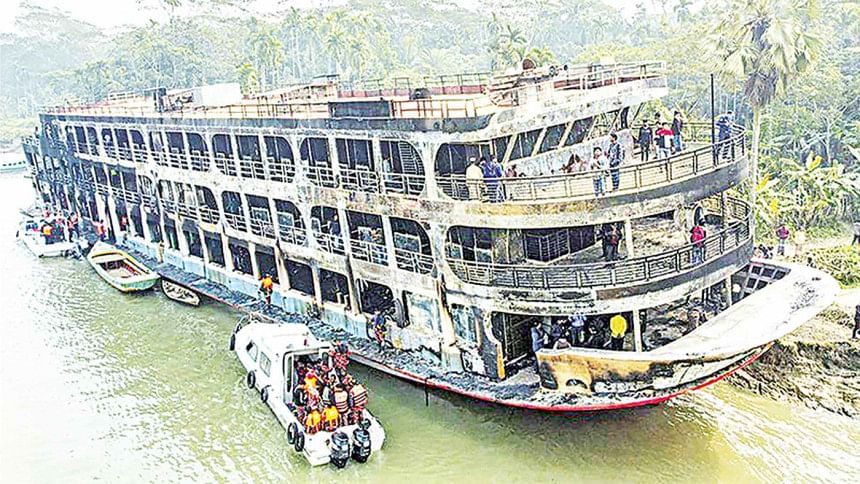Mitigating Inland Maritime Incidents with Law

In the last two decades, the inland maritime accidents have accelerated in the country and over six thousand people have lost their lives, were injured, or went missing in such accidents. By the beginning of 2022, several accidents have already occurred and over 50 people have lost their lives.
Chapter IV (sections 44-53) of the Inland Shipping Ordinance, 1976 deals with shipping casualties. Under section 44(2), the master or the crew has the responsibility to report if any casualty occurs in the voyage. However, in recent marine disasters, the master and the crew tend to be the first ones to escape from the liability of the accident by escaping the vessels.
Offences concerning inland marine accidents are to be tried under section 46 which provides that the Government may direct the District Magistrate or the Upazilla Nirbahi Officer to hold the inquiry. Additionally, the Court of the Magistrate of the First Class has jurisdiction where the casually has happened. Section 47 provides for the constitution of the Marine Court to try the punishable offences under the Ordinance.
Additionally, under section 54B, if any vessel carries more than one hundred passengers, it shall require telecommunication equipment to operate the vessel. Most inland vessels lack telecommunication devices and safety equipment. From the reports of several incidents that took place last year, the vessels were overcrowded and not having proper safeguard mechanisms installed in the vessels to deal with the accidents.
As reported, the primary reason for the accidents is the overcrowding of inland passenger vessels such as launch or ferry. The lack of skills of the masters of the vessel and proper training to operate the inland vessels, draw the risk of incidents.
Another problem in launch capsizing is that the victims do not get proper compensation. While the master responsible is liable under section 65, victim support or victim compensation is not addressed in existing legislation. Not having proper embedded legislation is a challenge to get access to justice for the victims. There are no proper victim financial support funds in the existing legislation either.
According to some peer-reviewed papers, there is no database for inland vessel accidents. This prevents illustrating the exact scenario of the incidents.
Though the 1976 Ordinance requires the proper training of the masters to be ensured, in reality, most of the masters do not have sufficient training. Without the proper knowledge on the safety of life at sea or about preventing collisions at sea, the collisions occur and the safety of the passengers is compromised during the occurrence of the collision.
Additionally, every inland vessel especially passenger-carrying vessel should have safety features. The ballast of the vessel should be in good condition during departure and arrival and the Master of the vessel should keep eye on the load-lines. According to various peer-reviewed research papers, due to the overloading of the passengers, the vessels lost their stability and accidents happened.
Though the 1976 Ordinance has mentioned that, an inland vessel cannot proceed to voyage without ensuring the fire safety features, in reality, it is hardly maintained by the authority.
However, there is no provision mentioning smoke detectors in the legislation. Analysing the incident, the smoke of the vessel is often ignored by the crew and the master of the vessel and as a result, the incident becomes an unavoidable consequence. The engine rooms are situated beside the kitchen or lower deck of the vessel, and due to this, combustible substances from the kitchen easily cause a fire in the engine room.
At present, there are 12,959 registered inland vessels, among them, 839 are passenger-carrying vessels according to the Department of Shipping. However, there is no concrete data regarding the unregistered vessels.
Perusing the recent incidents, expired licenses of vessels concerning engines, lack of proper safety features, not having insurance licenses are the primary cause of the incidents.
Though the 1976 Ordinance has some preventive provisions to safeguard the passengers from the incidents, the lack of strong enforcement of the law has paved the way for the offenders to commit the offence. Therefore, the existing legislation needs to be amended to safeguard the passengers from unfortunate incidents in near future.
The writers are lawyers, MCLaw Services.

 For all latest news, follow The Daily Star's Google News channel.
For all latest news, follow The Daily Star's Google News channel. 



Comments